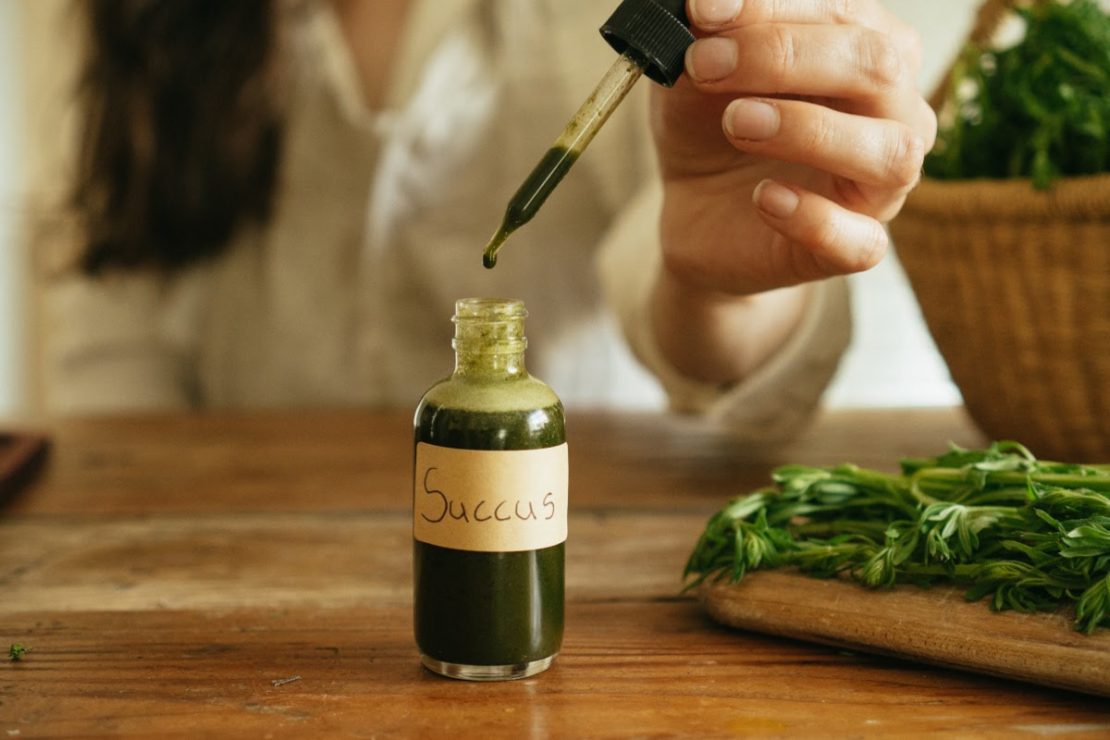
How to Make a Succus
A succus is the freshly expressed juice of a plant or its fruit. If you aren’t familiar with this kind of herbal preparation, that is probably because it hasn’t been as widely offered by producers in the herbal industry. Home herbalists tend to reserve this type of preparation for fewer plants, or those that will be used immediately.
The succus was regularly used by herbalists in the 1800’s, and fell out of use when tincturing became the industry standard late in the century (Kress, n.d.). Tinctures are thought to be more standardizable, and fresh juices are thought to vary greatly in strength due to variance in cultivation, climate, and other environmental factors.
That said, for folk herbalists, a succus is still a useful solution for turning a surplus of herbs into a manageable storage supply. There are plenty of herbal allies you can use to craft a succus—and even more ways to enjoy their use!
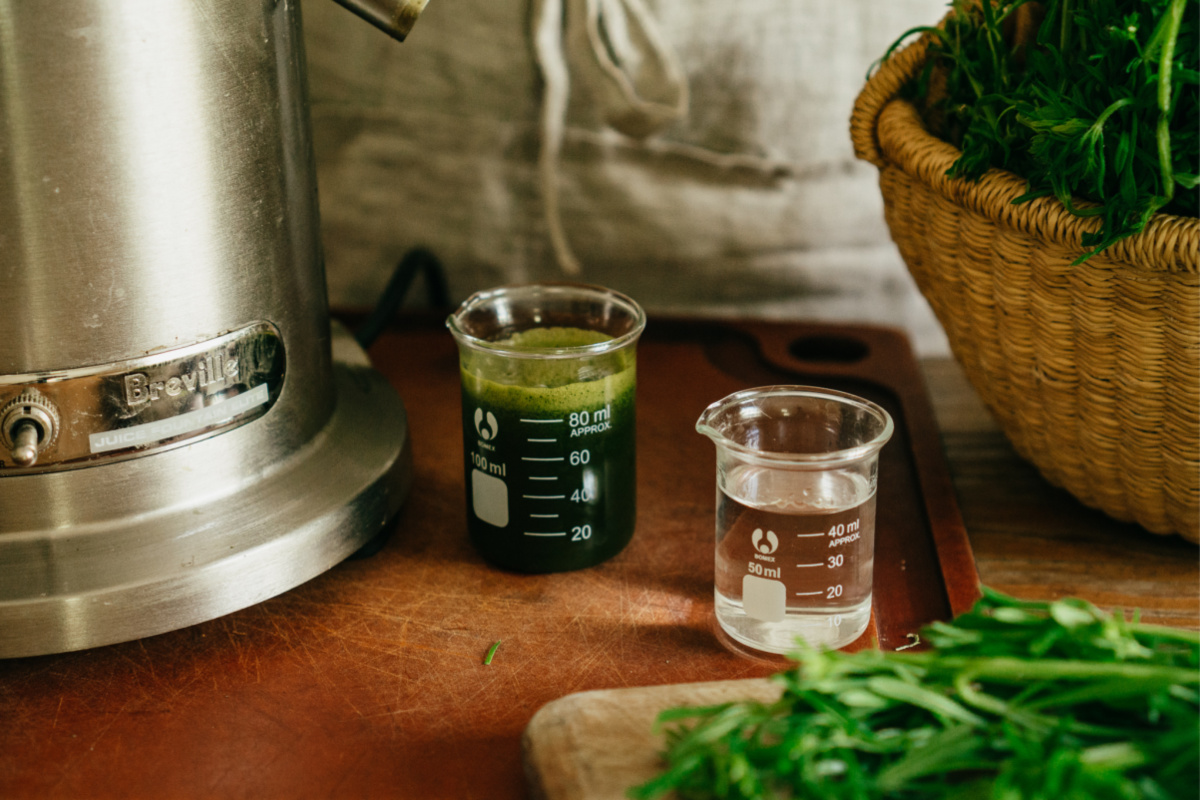
How to Make a Succus
Good news if you have a juicer! In addition to juicing fruits and veggies, you can use it to create fresh herbal juices. Simply juice your chosen plant material as your manufacturer’s instructions specify. After you are finished running your plant material through the juicer, make sure to squeeze any excess juice from the pulp using cheesecloth.
If you don’t have a juicer you can use a blender to make a succus. If you are using a blender, chop up your selected fresh herbs before placing them in the blender. For those with tougher stems, you may want to de-stem or garble the fresh herbs, using just the leaves and flowers. Use your judgment based on the texture and flavor of the stems, and your blender’s size, blade shape, and power.
Once your herbs are in the blender add a small amount of water, starting with ¼ cup, or about the minimum that you think it will take to facilitate blending the herb into a thick pulp. Begin to blend, and if the slurry is too thick to continue blending, add small amounts of water through the opening in the top of your blender. You only want enough water to keep the herbs moving around and breaking down.
Once the herbs have comminuted to a thick boggy sludge you can strain the juice from the plant material using cheesecloth. Be sure to fully express the plant material for maximum yield.
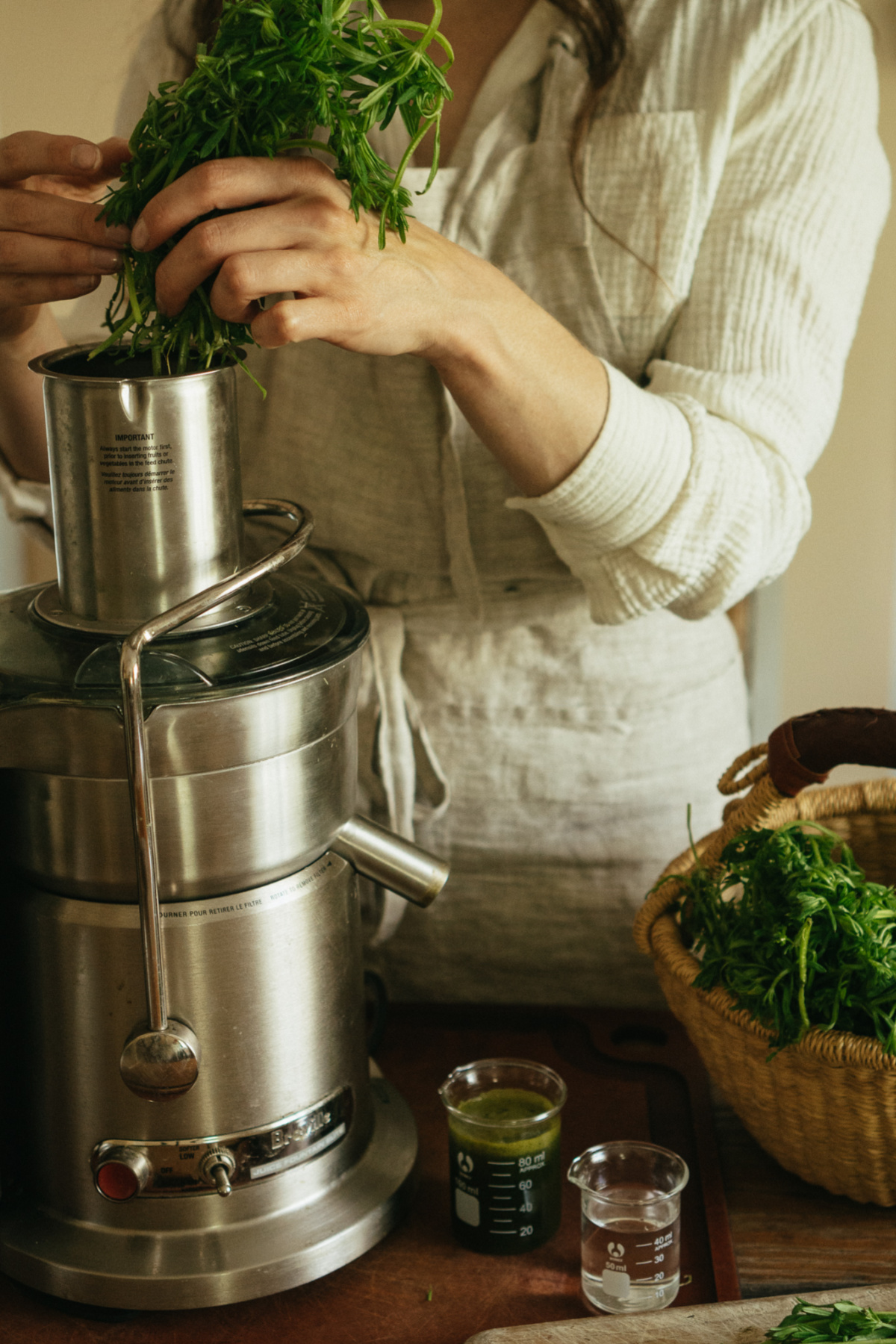
Succus Uses
A succus can be enjoyed as a fresh juice (think wheatgrass shots), and can also be preserved in various ways to prolong the shelf life of the preparation.
Traditionally, a succus would be preserved by adding 25% alcohol by volume to preserve the fresh juice (Kress, n.d.). Some herbalists add a succus to tinctures of the same plant to enhance the synergistic effects and potency of the tincture (Moonflower Herbals, n.d.).
Succi made from flavorful roots or fruits has the potential to liven up your mixology game. A lemon-ginger succus can easily become a lemonade sure to dazzle tastebuds for people of all ages. For this purpose, you might choose to extend the shelf life of the succus by combining it with honey, as described below.
Some succi are created for external application and can be frozen to preserve until use. This is described in the recipe for “boo-boo cubes” at the end of this article.
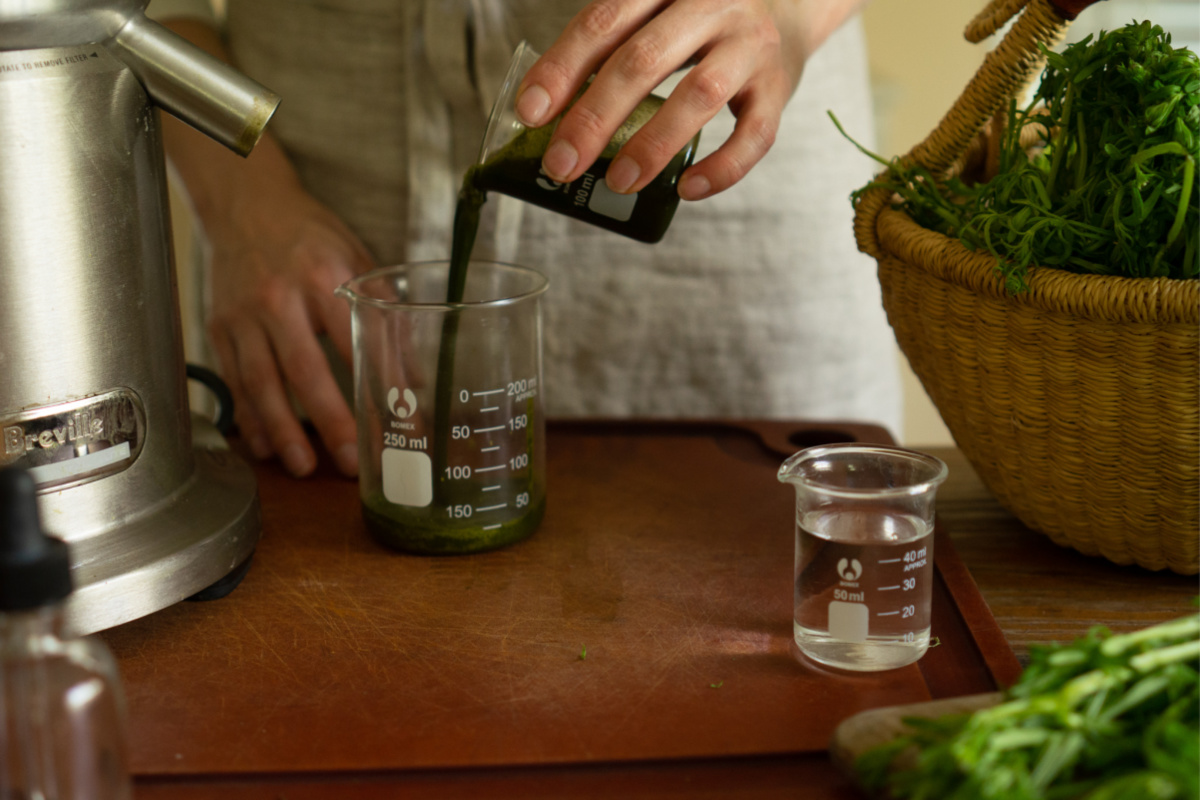
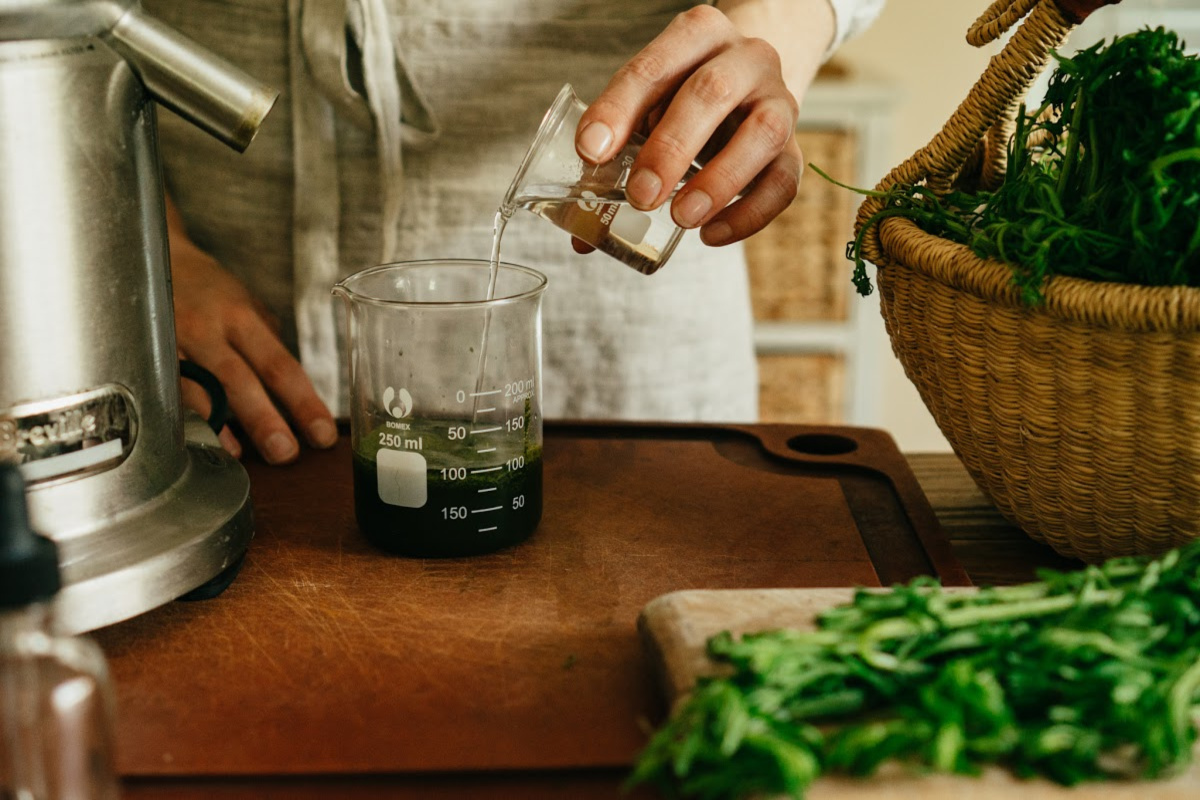
Preservation Methods
As stated earlier in this article, the succus can be enjoyed fresh or preserved for use at a later time. By preserving these fresh juices you can keep those beneficial spring and summer plant allies on hand throughout the year. There are several ways to preserve a succus and depending on its intended application the preferred preservation method may differ.
For instance, it is traditional in Western herbalism to preserve the juice with alcohol. In his book The Herbal Medicine-Maker’s Handbook: A Home Manual, James Green (2002) tells us that we can preserve a succus by combining 3 parts juice with 1 part alcohol, to yield a final product with 25% alcohol. (Just be sure to account for the water portion in any alcohol product, such as vodka or Everclear, you use that is not 95% alcohol.) This is a good option for any succus whether it is intended for internal or external use.
Then, there is the simple option to leave the succus in its unadulterated form and freeze it. While you will need some extra freezer space for this kind of preservation, it is the most supreme way to preserve those fresh green spring weeds that are so helpful for bites, scrapes, and burns.
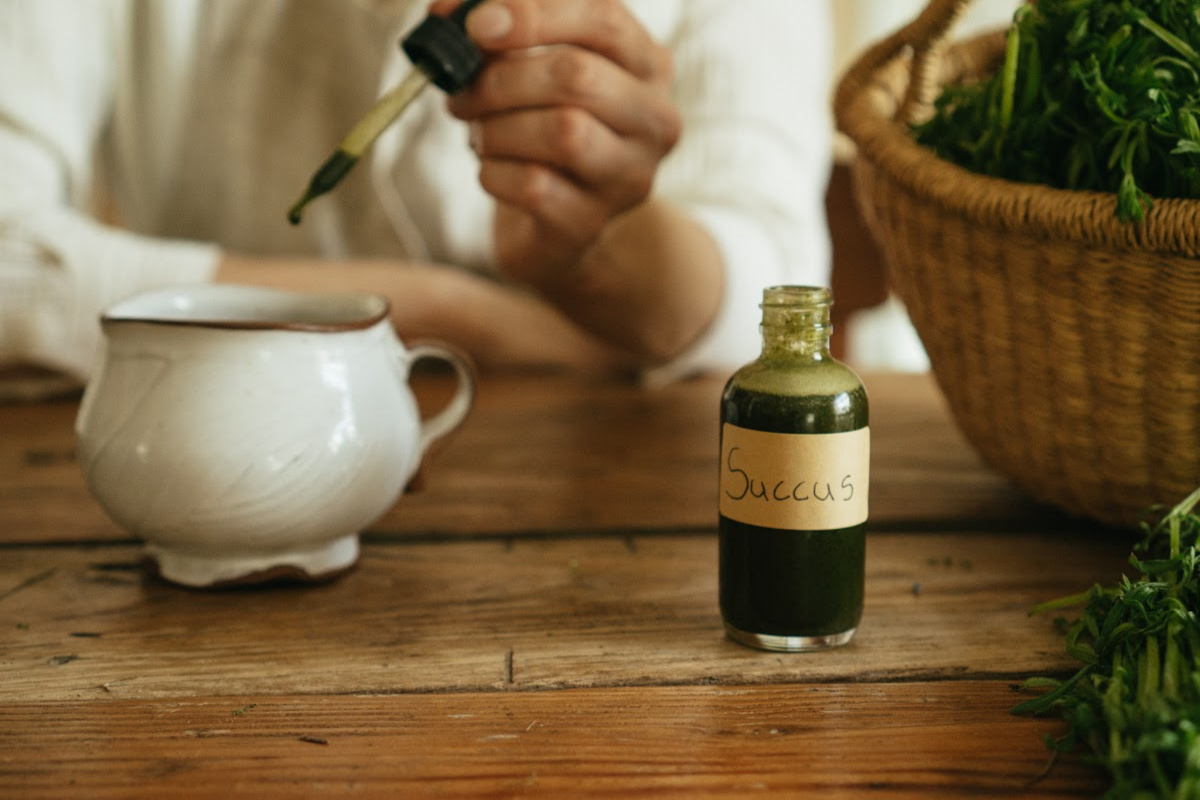
When Would You Make a Succus?
A succus is made by juicing fresh plant material. If you’ve ever juiced anything, you know that you can juice a whole mountain of plant material and still not have more than a quart of juice when you’re finished. Because of this, a succus will not always be the most resourceful choice for every single herb.
You get far more yield when you tincture a plant than when you juice it, so for herbs that yield limited material, a succus is not the best way to stretch that supply. That being said, a succus is the perfect solution for those herbs that grow prolifically, especially in the spring and early summer when they are tender and abundant.
Mounds of chickweed (Stellaria media) that hug garden beds as blankets of snowmelt, and tangles of cleavers (Galium aparine) all around the edges of the fence in the backyard are great examples of the kinds of early spring arrivals I’m talking about.
Succusing can also be a good way to use herbs that are overly abundant and available all at once. For instance, it could be difficult to have the capacity in drying or tincturing space to save all the elderberries (Sambucus nigra) a mature tree will produce in a season, but juicing the berries allows you to reduce the volume of fruit into a juice that can be more manageable, and partly processed, for storage purposes.
Ideal Herbs for Succus?
For a juice you need to use fresh herbs—dry herbs do not have any water content to provide even when pulverized. As a general rule, herbs with higher water content will give you greater yield. Here I’ve included herbs that I think would make excellent candidates for a succus.
- Aloe (Aloe barbadensis)
- Cleavers (Galium aparine)
- Chickweed (Stellaria media)
- Calendula (Calendula officinalis)
- Plantain (Plantago spp.)
- Dandelion (Taraxacum officinale)
- Elderberry (Sambucus nigra)
- Ginger (Zingiber officinale)
- Hibiscus (Hibiscus sabdariffa)
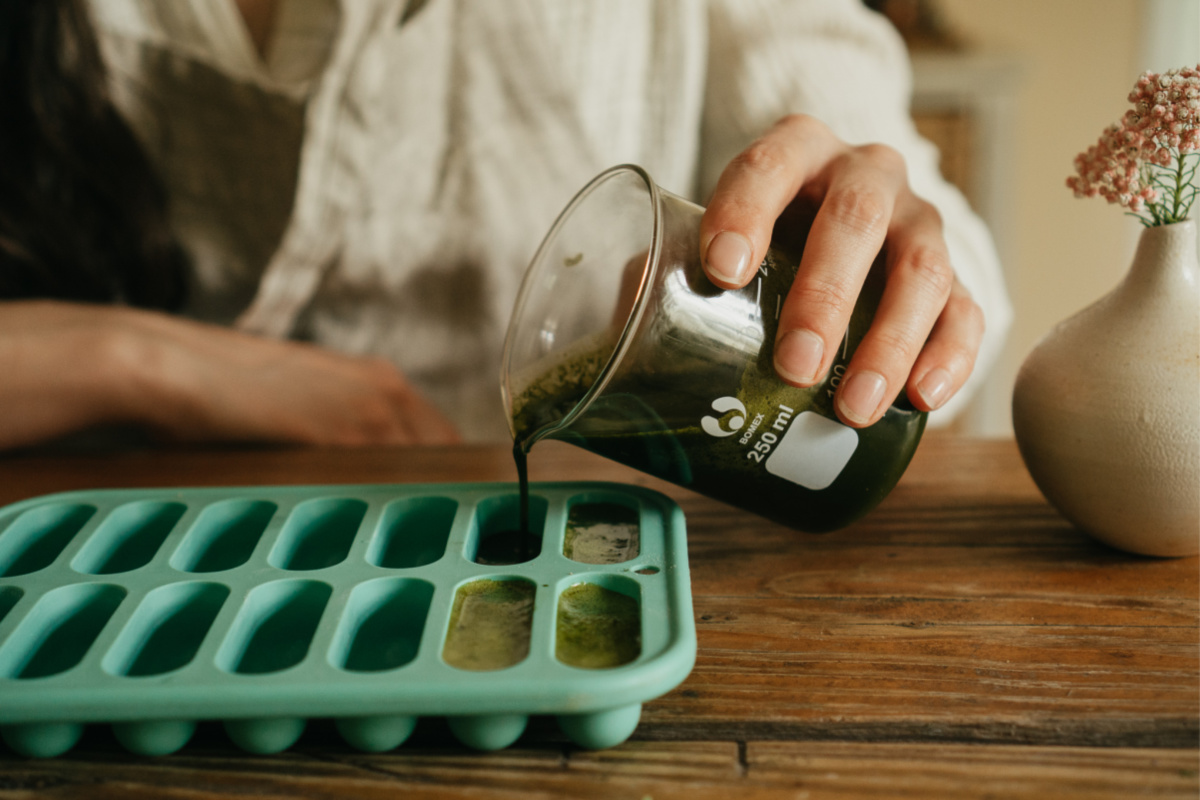
1 part plantain (Plantago spp.) Separate the soft inner flesh of the aloe from the tough exterior.
Boo-Boo Cubes
1 part chickweed (Stellaria media)
1 part aloe (Aloe barbadensis)
Note: Measure parts by volume.
In Closing,
A succus may not be the best herbal preparation method for all of our plant allies. However, it can certainly be the solution to harnessing the abundance of some. Now that you know how to make, preserve, and use these fresh herbal juices, I hope that you invite this preparation method into your herbal practice and self-care routines.
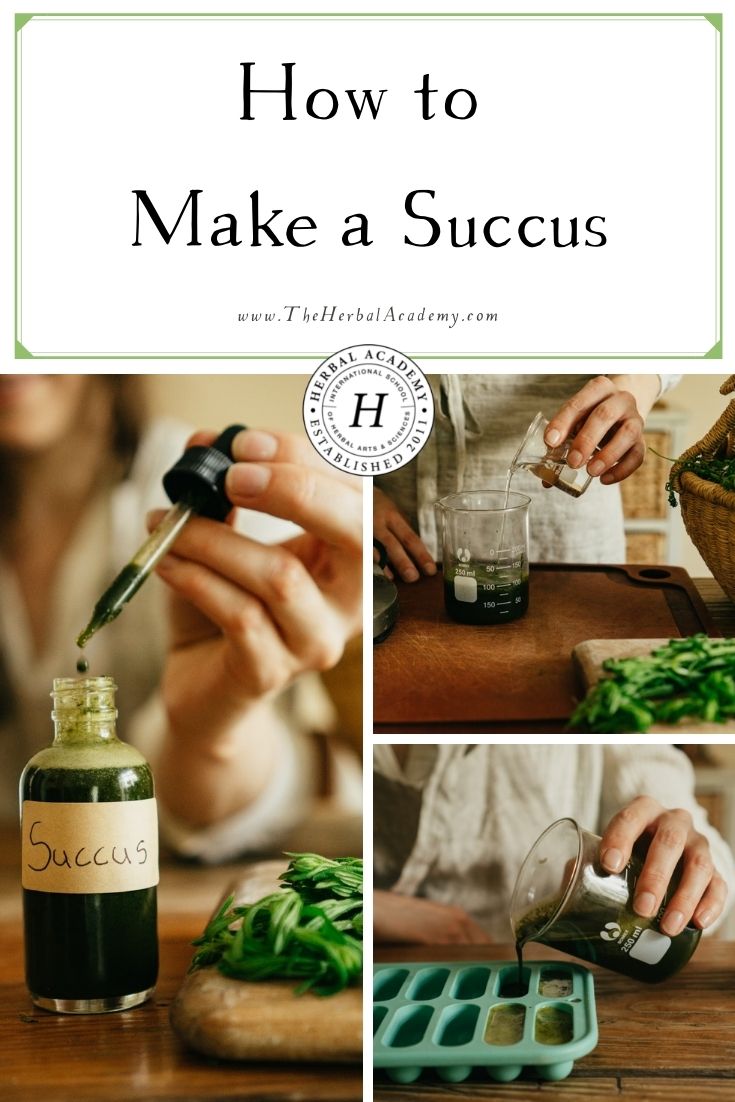
REFERENCES
Green, J. (2002). The herbal medicine-maker’s handbook: A home manual. New York, NY: Crossing Press.
Kress, H. (n.d.). Succi.-Juices [Database]. Retrieved from https://www.henriettes-herb.com/eclectic/kings/succus.html
Moonflower Herbals. (n.d.). Herbal extractions and preparations [PDF]. Retrieved from http://organicgrowersschool.org/wp-content/uploads/2013/06/Herbal-Extractions-and-Preparations.pdf







